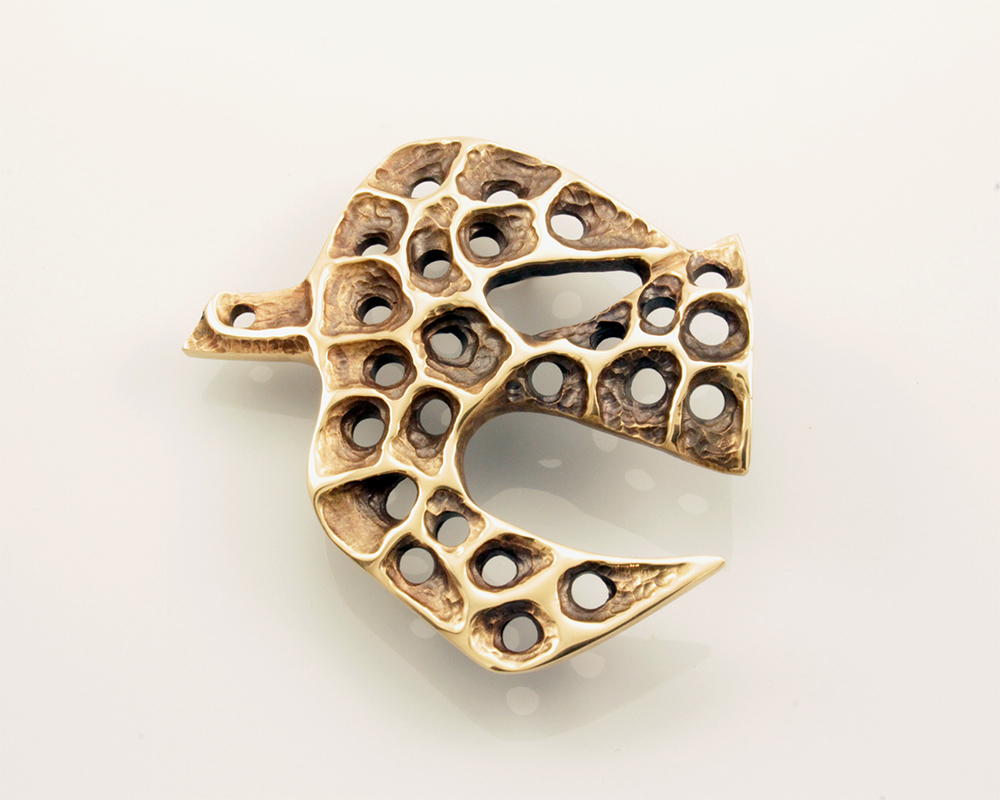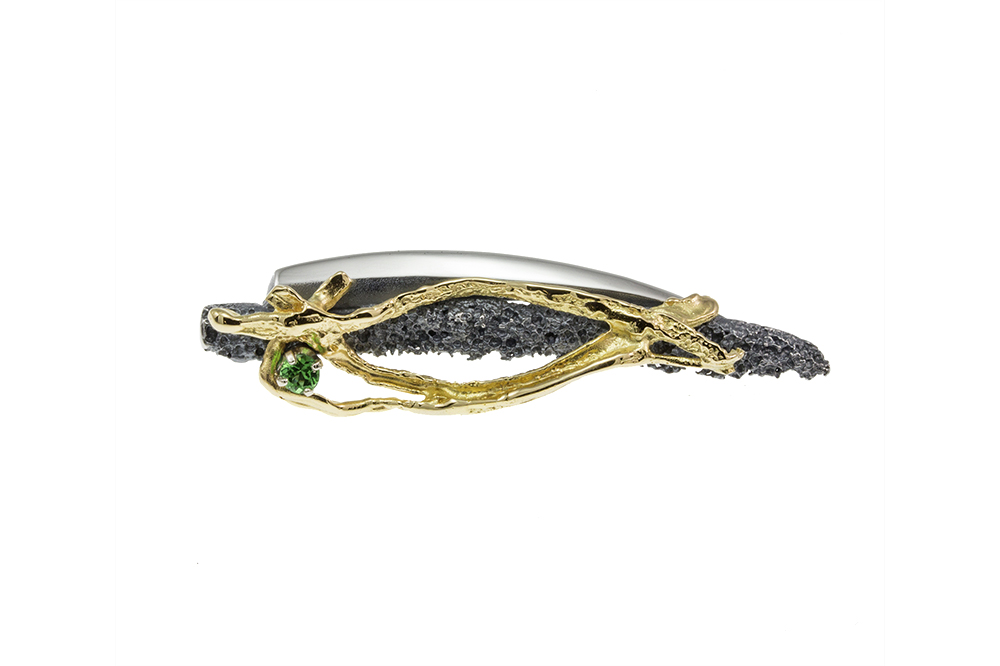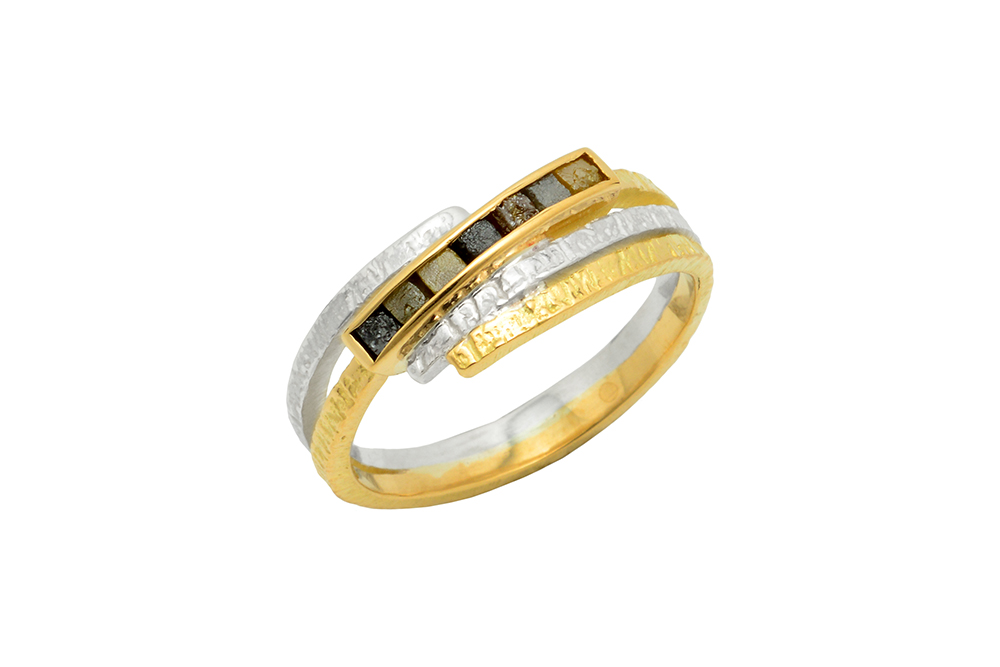WHAT'S ON - ARTIST OF THE MONTH
ARTIST OF THE MONTH
Every month we introduce you to one of the Canadian artists we represent. There is no salt and pepper--we reveal the rawest story on our artists' creative journey. How they met and fell in love with jewellery? What inspired them and how? What was the making process like? What are their tips on being a successful and established jewellery artist? Visit our Facebook and Instagram pages to stay up to date on our latest collections. Go to INTERVIEW ARCHIVE to read more stories.
Artist of the Month (16): Jean-Pierre GauvreauSeptember 26, 2019 Proudly introducing Jean-Pierre Gauvreau of Repentigny, Québec, an artist who creates contemporary jewellery items that perfectly balance rough simplicity with refined elegance. Follow along all this month for a glimpse into the life of this unique goldsmith with a musical disposition!
Q: What is your origin story? I was born in Québec City and moved to Montréal with my family at age 6. Around the same time my father passed away, so I was raised alone by an anti-conformist mom. I never knew we were poor. I was a good student with a special interest in music and Latin studies, no religion but always involved in social activities. Before taking private jewellery lessons and falling in love with the craft, I went to college for administration technique, and also worked in radio and music show production with the guys who started Spectra in Montréal.
Q: How did you get started in the jewellery industry? I began learning how to make wire jewellery with a sense of perfection when I was about 17, and paid for my education making jewels for friends and family. My first encounter with the real craft was with a bronze sculptor who also made jewellery - yeah, jewellery can be sculptural! When asked about the trade, he told me to take a course with a master in Montréal. First I studied with Armand Brochard, then the extraordinary Madeleine Dansereau. My first exhibition as a student happened to be at La Guilde Canadienne des Métiers d’art, and many more followed. For a time I took a break from jewellery and worked for the Multiple Sclerosis Society – which got me hooked to keep doing social work even until today. I really started as a professional craftsman in 1981 with about 20 shows in a row before being selected for the 1982 Salon des métiers d’art in Montréal.
Q: What is working process like? Starting in 1986, I began to streamline my process to be more creative in one direction while using cost effective methods. After all, it’s all about making a living out of your craft. The first objects were brooches. Like a good riff, you need a powerful hook to inspire the rest of the song. Brooches give you space to work and they were very popular at the time. I had 4 to 6 brooches spinning around at one time, each a bit different but inspired by the same basic idea. For each brooch, I would then create a collection of pieces to match. The next thing I knew I had 15 different pieces of wearable art for each brooch, and nearly a hundred pieces total for the first public opening of the new collection. Each collection has its own life, and I add new models over the seasons – each collection with a 5 to 7 year lifespan, sometimes overlapping the previous collection so as to not confuse returning visitors. Analyse your society, find out what’s hype at this moment… and create jewellery out of that concept.
Q: What materials and techniques you favour? Over the decades I have used many materials in order to keep up with the different collections I have designed – from steel to gold, plastic to raw diamonds, anything was perfect in its own way, even "plumes de faisans + poils de caribou". My favourite metal has always been sterling silver, mostly because you can do whatever you like without compromising the price tag. Its natural oxidation, when properly finished by bead blasting, is so subtle with that soft pearly shine, it gives a perfect contrast against gold. Since around the year 2000, my favourite combination has been dark sterling with 18k yellow gold. Recently, I also fell in love with 18k palladium white gold. I claim this is the “metal of gods”. Any jeweller who ever worked with white gold alloys can testify to their difficulty, leading to a near obligation to rhodium plate the item… this palladium alloy does not turn blue while soldering, which greatly reduces working time by resisting discolouration. It complies beautifully to setting and most of all, it shines with a very nice greyish tinted cold white, like no other alloy it is the perfect companion to 18k yellow gold. When it comes to techniques, since my studio has always been located outside of the Montréal jewellery district, I have to rely on my own fully equipped atelier. This means if specific equipment is needed, I buy it. For example, there was this production wedding band with eight different parts to solder, calling for spot welding for pre-positioning… I got a PUK TIG wilder from Lampert. It turned out I was the first in my area to have this machine, so I quickly began to save peoples sight by welding their eyeglass frames! As my jewellery studio is totally independent, from casting to 3D pro-grade printing, everything is done on site and also offers all the same services as other artisans.
Q: What makes your collection unique in the industry? My collections are not that unique, my clients are. I am an individual that creates from my personal believing… my collections are made of my dreams. They reflect my spiritual moments, personal feelings, and the way I think. My friends say I’m an artist. I make a living out of my dreams… therefore I might be called a professional artist. The broad difference between some artist collections and the industry is about the profit intended. The artist’s target is to express himself and I love what I’m doing.
Q: Interesting influences? Designers you admire? First, the Lapponia Jewelry Group. Their designs were sleek, pure, free and open to personal perception. Then, all the works from European masters in Montréal, carving wax like peanut butter! They were bold in style as if they were born in a whirlpool – very instinctive and vastly creative work. I also met the American jeweller Donald Friedlich in 1983 near Boston. He was sculpting slate and adding gold accents, experimenting with dye cutting and repetitive patterns while I was working according to Stanley Lechtzin’s electroforming technique. Friedlich greatly inspired me to work with non-conventional stones and a few years later I was cutting and polishing granite to be integrated with silver and gold in my jewellery collection, which brought me most of my awards. Other American jewellers and potters guided me to integrate colours and pigments, but I was still searching for raw diamonds, not easily available in my part of the world. In fact, no dealers at all were interested in selling raw diamonds, as if they didn’t exist! In 2007 I was invited to participate in the Philadelphia Museum Craft Show. Among all the great jewellers showing their work there was Todd Reed. This guy’s approach was very similar to mine, leaving as evidence marks of scraping and forging on oxidized silver and 18k yellow gold. That show was so intense I couldn’t talk with him or Pat Flynn, Barbara Heinrich or Namo Cho. David Forlano’s booth was near mine… we had three minutes at closing time to chat. But I had enough time to realize that Todd Reed was using raw diamonds to such an extent that there must be stones somewhere. I started searching the internet in hopes of finding and keeping a steady supplier in Surat, India.
Q: What are the most valuable lessons you’ve learned? Be honest to myself and respectful to others.
Q: Do you have a motto or phrase that defines the way you work? Meticulously designed, carefully crafted and loyally handed down. "My creations are dedicated to people in search of a way to express themselves with a unique look. Giving birth to unexpected and innovative designs, my works of art are simple and rough -raw diamonds being my best friends- yet elegant and highly wearable. I create jewelry for people, with people."
A huge thank you to Jean-Pierre who took the time to share his wisdom and inspirations with us all month! Visit our gallery to explore Jean-Pierre Gauvreau's collection. |








